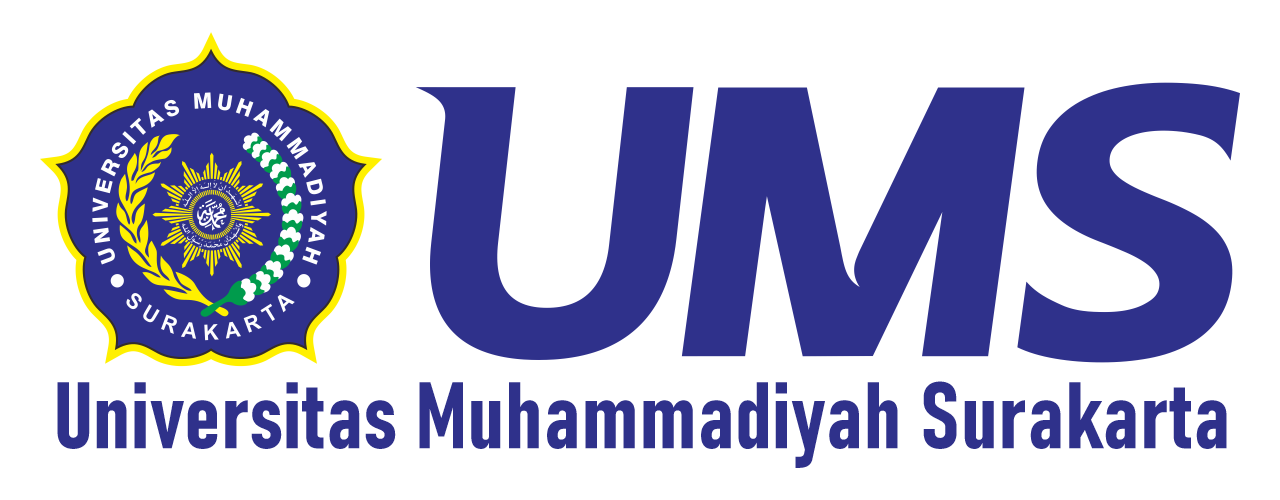ROLAND BARTHES' SEMIOTIC ANALYSIS OF THE MEANING OF HARAM IN THE QURAN
DOI:
https://doi.org/10.23917/qist.v2i3.2574Keywords:
in Roland Barthes's Semiotics, Term of Haram, Qur'anAbstract
The purpose of this research is to find meanings that are in accordance with the context of meaning at the time when the Qur'an was revealed and take the main message (significance) contained in the meaning to be contextualized in the present with appropriate meaning. Through the existing problem the word haram is often interpreted as a word prohibition, this understanding starts from the meaning of haram in the translation of the Qur'an itself but in fact the word haram itself has another meaning when presented in a textually different letter metamorphose. This research will be presented through Roland Barthes' linguistic semiotics research method by examining the word haram through a Semiotics approach. This analysis will be through the search for the meaning of Connotation and Denotation which explains the disclosure of myths behind a sign or writing. The results of this study produced an analysis of new meanings related to the word haram. This haram word algorithm changes its nature depending on the text and context of the verse. Not when haram is said to be a prohibition, but in this myth it turns out to have other meanings such as haram is an antonym of the word halal which means halal is in its place, while haram is not a prohibition but not in its place or limitation.
Downloads
References
Rukman Abdul Rahman, "Konsep Al- Qur'an Tentang Riba," Al- Asas, vol. 2, Oct. 2020.
Siti Zulaikhah and Yuli Kusumawati, "Halal dan haram Dalam Islam ," Suhuf, vol. XVII, May 2005.
Salman Al farisi, "Unsur Kemuliaan dalam Syariat Pengharaman: Reinterpretasi Kat ‘haram' dalam Al- Qur'an melalui Metode isytiqaq," Ushuluna, Dec. 2017.
إمام محيي السنة أبي محمد الحسين, No Titleمعالم التنزيل. الريلض: دار الطيبة للنشر.
سعد بن عبد الرحمن الحسين, مذهب التفسير جلالين, ١.
محمد متولي الشعروي, تفسير الشعروي للقرآن العظيم. مكتبة الصف لى النشر والتوزيع.
Imam Ibnu Manzur Al Ifriqi, Lisan Al- Arab, 1st ed. Mesir: Mamlakatu Al- Arobiyah As- Su'udah, 1920.
Muhammad Quraish Shihab, Tafsir Al Misbah (Kesan, pesan, dan Keserasian Al- Qur'an). Jakarta: Lentera Hati, 2006.
S. Syamsuddin, Hermeneutika dan Pengembangan Ulumul Qur'an. Yogyakarta: Pesantren Nawesea Press, 2017.
A. Sutrisno, M. R. Haqiqi, B. M. Roza, and M. M. Dalail, "Qur'Anic Insights on Religious Moderation and Its Relevance To Religious Harmony in Indonesia," QiST J. Quran Tafseer Stud., vol. 2, no. 1, pp. 102–115, 2023, doi: 10.23917/qist.v2i1.1470.
R. Adiansyah, A. Sofia, M. Bensar, A. Adams, and M. A. Barakat, "Roland Barthes Semiotic Study: Understanding The Meaning Word Of 'Azab, A Reinterpretation For Modern Society," QiST J. Quran Tafseer Stud., vol. 2, no. 3, pp. 255–274, Jul. 2023, doi: 10.23917/qist.v2i3.1445.
G. M. Qudsi, Syaifuddin Zuhri, Lebih Dekat dengan Ma'na Cum Magza Sahiron Syamsuddin. Yogyakarta: SUKA Press, 2022.
Ihsan Nurmansyah, "Jurnal Studi Ilmu Al Qur'an dan Hadist," J. Stud. Ilmu Al- Qur'an dan Hadist, Prodi Ilmu Al Qur'an dan tafsir UIN Sunankalijaga, Yogyakarta, vol. 21, Jan. 2020.
K. Nugroho, M. Z. Kiram, and D. Andriawan, "The Influence Of Hermeneutics In Double Movement Theory (Critical Analysis Of Fazlurrahman's Interpretation Methodology)," QiST J. Quran Tafseer Stud., vol. 2, no. 3, pp. 275–289, Aug. 2023, doi: 10.23917/qist.v2i3.2531.
A. Saiin and M. Karuok, "the Concept of Sense in the Qur'an: Tazakkur, Nazara, and Tadabbur As the Basic Human Potential Towards a Superior Human Being," QiST J. Quran Tafseer Stud., vol. 2, no. 1, pp. 44–62, 2022, doi: 10.23917/qist.v2i1.1288.
A. Rohman, B. Mubaroka, and Q. Butlam, "Methodology of Tafseer Al-Qurtubi: Sources, Styles and Manhaj," QiST J. Quran Tafseer Stud., vol. 2, no. 2, pp. 180–202, 2023, doi: 10.23917/qist.v2i2.1451.
A. Nirwana AN, D. Mustofa, and S. Akhyar, "Contextualization Review of the Interpretation of the Verses of the Fathul Qulub Book at the IMM Sukoharjo Regeneration Program," J. Ilm. Al-Mu ashirah, vol. 20, no. 1, p. 146, Feb. 2023, doi: 10.22373/jim.v20i1.16939.
Lenny Herlina, "Tinjauan Konsistensi Ajaran Islam dalam Q.S Al- baqarah 173 dalam Persoalan Messes Rubella," Schemata, vol. 8, Dec. 2019.
Amir Mahmud, "kajian Hadist Tentang halal, haram dan syubhat," Adab. Univ. Yudharta, vol. 17, 2017.
Desy Kristiane, "Labelisasi Halal dan Haram," Tadayun, vol. 2, Jun. 2021.
Risna Mosiba, "Halal dan haram dalam Prespektif Pendidikan (Kajian hadist tahlili)," J. Inspiratif Pendidik., vol. 7, 2018.
Tamara Justini, "Kjian Semiotika pada Poster UNICEF ," J. Educ., vol. 3, Dec. 2020.
Asnat Riwu and Tri Pujiastuti, "Analisis Semiotika roland Barthes pada Film 3 Dara," Deikssis, Univ. pamulang, vol. 10, Dec. 2018.
Aji Nahrul Pintoko, "Metode Penafsiran Al-Qur'an Kontemporer: Pendekatan Ma'na Cum Magza oleh Dr.Phil Sahiron Syamsuddin,M.A," vol. 2, 2022.
Aidah Mega Kumalasari, "Makna Qiradah dalam Kisah Bani Israil," Al Fanar, vol. 2, 2021.
Philipp Thody and Ann Course, Introducing Barthes. Ikons Books.
Ninuk Lustiyantie, "Pendekatan Semiotika Model Roland Barthes dalam karya Sastra Prancis," 2012.
Yayan Rahtikawati and Dadan Rusmana, metodelogi tafsir Al Qur'an, Strukturalisme, Semantik, Semiotik dan Hermeneutika. Bandung: Pustaka Setia, 2013.
Azkiya Hikmatiar, "Konsep Poligami Dalam AL- qur'an (Aplikasi Semiotika Roland Barthes terhadap Q.S An- Nisa [4]:3)," QOF, vol. 3, 2019.
Muhammad Ardiansyah, Terjemahan Elemen semiologi Roland Barthes. Yogyakarta: basabasi.
Ali Imron, "Kisah Yusuf A.S dalam Al- Qur'an (kajian Semiotika)," UIN Sunankalijaga, Yogyakarta, 2010.
Raras Christian, "Mitos Gerwani dan kaitanya dengan gerakan 30 September 1965," Universitas Indonesia, Jakarta, 2009.
Dwi Endah Ciswiyati, "Review buku Kajian Semiotika Pengantar Semiotika: tanda- Tanda Dalam Kebudayaan Kontemporer ‘Arthur Asa Berger,'" UNNES, 2020.
Nawiroh Vera, Semiotika dalam Riset Komunikasi. Bogor: Ghalia Indonesia, 2014.
Nurhadi and Shihabul Millah, terjemahan Mitologi Roland Barthes. Yogyakarta: Kreasi Wacana, 2004.
Devy Aisyah, "Analisis Isytiqaq dalam Kajian Fiqih Lugah dan Pengajaranya," Ta'dib, vol. 18, 2016.
Louis Ma'luf, Al Munjid Fi' Al- Lugah Wa Al- A'lam, 1st ed. Beirut: Daar Al- Masyriq, 1992.
Joko Nursiyo Lc, Manhaji Jilid 1. Malang: Darun Nuhat (Pesntren Ilmu nahwu shorof), 2018.
Ust. Adi Hidayat, "Kenapa Masjid di Kota Suci Disebut Dengan Al Haram? ustadz Adi Hidayat Lc MA," Ceramah Pendek, Feb. 2017.
K. Online, "Arti Kata Haram."
أبي حسين أحمد بنفارس بن زكريا, معجم مقاييس اللغةت. دارالفكر للطباعة والنشر والتوزيع, 1979.
الإمام جليل الحافظ عماد الدين أبو الفداء إسمعيل إبن كثيرر الدمشقي, تفسير القرآن العظيم, 1st ed. القاهرة: كافة الحقوق الطبع محفوظة لمؤسسة قرطبة للطبع والنشر, 1421.
أبي قاسم محمود بن عمر الزمخشري, تفسير الكشاف , 1st ed. الرياض: مكتبة العبكيان, 1418.
Tasawuf TV, "makna Haram itu Bukan Tidak Boleh dan Halal itu Bukan Boleh. Orang Islam harus tahu," Tasawuf TV, Mar. 2019.
أبي عبد الله بن أحمد بن أبي بكر القرطبي, الجامع الأحكام القرآن, 1st ed., vol. 10. بيروت: الرسالة, 2006.
Buya Yahya, "Makna Tanah Haram dan Bulan Haram- Buya yahya menjawab," Al- Bahjah TV, Sep. 2017.
Downloads
Submitted
Accepted
Published
How to Cite
Issue
Section
License
Copyright (c) 2023 Muhmmad Ghifari Makarim, Hikmawati Rahayu, Mulia Mardi

This work is licensed under a Creative Commons Attribution 4.0 International License.














